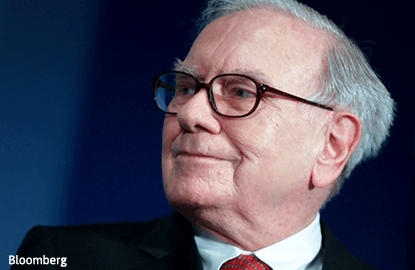
This article first appeared in The Edge Financial Daily, on February 29, 2016.
NEW YORK: Warren Buffett’s eating habits are entirely unhealthy. His jokes and analogies induce groans — and he sprinkled plenty of them into the annual letter he released to Berkshire Hathaway shareholders on Saturday morning.
When it comes to running a business, though, the folksy, 85-year-old billionaire has proven to be the best there is. And so, they say there may never be another Warren Buffett. There won’t because most chief executive officers (CEOs) aren’t even trying to emulate him, which is probably why so much of their dealmaking has been ineffectual by comparison.
Berkshire Hathaway’s success, put simply, is the result of Buffett not putting all the company’s eggs in one basket. That’s how Berkshire — a declining textile business when Buffett took over in 1965 — got to prosper into the fifth-largest corporation in the world, with a market value of US$325 billion (RM1.36 trillion) and record profit of about US$24 billion in 2015.
The rest of the corporate world has turned its nose up at conglomerate structures and decided that what investors need is less complexity. This viewpoint posits that more focused management teams are less distracted and allocate resources more efficiently, making for a more appealing investment for shareholders. For some companies that did become too sprawling (perhaps General Electric [GE] is the best example), that may be true. Never has the pressure been so intense on a company to pick one industry or end market and stick with it.
In the face of growth challenges, CEOs have thrown their hands up. They’re combating demographic shifts, penetrated markets and let-down in China, and they don’t have time for costly innovation that can be hit or miss. Investors want to see earnings growth now. That’s why most companies are embracing deals — but specifically buying only those assets that fit their main line of business and selling off those that don’t. It’s very different from Buffett’s method. Of the 20 most valuable companies in the world, the only true remaining diverse conglomerates may be Berkshire, Johnson & Johnson and GE. At what point will the break-up trend come up short and diversification once again become the name of the game?
There are two other big differences between Buffett’s acquisition strategy and everyone else’s. First, his sensitivity to price. He won’t overpay, whereas many others have shown they will. The median earnings before interest, taxes, depreciation, and amortisation multiple for global merger and acquisition (M&A) exercises last year was the highest since the record in 2007. On a revenue basis, last year was the record.
Second, Buffett buys businesses run by managers he admires and he keeps them in those roles, or takes stakes in other big public companies such as Coca-Cola, IBM and Wells Fargo. The acquired companies become part of the Berkshire umbrella and funnel the cash up the chain so that Buffett can invest it. This is also a stark contrast to the strategy at Jorge Paulo Lemann’s 3G Capital, which had made Buffett’s recent partnering with the private-equity firm a head-scratcher. Buffett addressed it in his annual letter, boiling it down to two different ways to reach the same goal. 3G buys a business and removes the bloat, while Buffett scopes out targets that aren’t bloated. Together, they teamed up to cut the fat at ketchup maker Heinz, which has since merged with macaroni-and-cheese maker Kraft. However different their M&A styles are, Buffett says he isn’t opposed to working with Lemann again, probably more as an investor.
Diversifying means there are more risks and pitfalls to manage, and Buffett has pointed out a few. Declining coal shipments will hurt his railroad, BNSF Railway, for one — and driverless cars might pose a threat to his auto insurer, Geico. On the other hand, the potential impact of climate change on his other insurance businesses isn’t keeping him up at night. He did, however, mention an unsettling threat that should keep all of us up, but over which we have no control: the probability of a catastrophic event such as a cyber, biological, nuclear or chemical attack. It’s the type of risk that’s low now, but “approaches certainty in the longer run”, he wrote. Yikes!
Corporate America may be up against more challenges than ever as gross domestic product trucks along at 2% and some smart people start to question the stability of our economic recovery. But Buffett is still the nation’s cheerleader, and that’s a good sign. In a way that only he could put it: “America’s golden goose of commerce and innovation will continue to lay more and larger eggs.”
But, ya know, just as long as that goose isn’t cooked by nuclear warfare. — Bloomberg